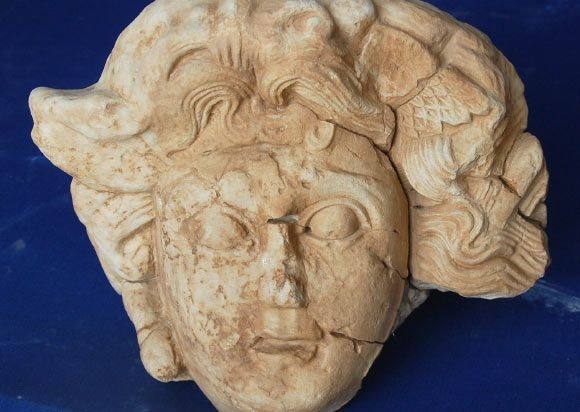|
|
Post by UKarchaeology on Nov 11, 2015 15:04:10 GMT
A head of Medusa has been unearthed by a team of archaeologists digging at the site of Antiochia ad Cragum, an ancient Roman city on Turkey’s southern coast. In addition, the team – led by the University of Nebraska-Lincoln – has uncovered the ruins of two large buildings: a bouleuterion (city council house) and a Byzantine-era basilica. Since 2005, the team has been excavating the remains of Antiochia ad Cragum, which was founded by Antiochus of Commagene, a client-king of Rome, in the middle of the 1st century CE. By the 4th century, the area was a key site for the development of Christianity. “This region is not well understood in terms of history and archaeology. It’s not a place in which archaeologists have spent a lot of time, so everything we find adds more evidence to our understanding of this area of the Roman Empire,” said Prof. Michael Hoff of the University of Nebraska-Lincoln, director of the excavation. “Antiochia ad Cragum had many of the trappings expected of a Roman provincial city – temples, baths, markets and colonnaded streets.” “The city thrived during the empire from an economy focused on agricultural products, especially wine and lumber.” The newly-unearthed Medusa’s head, which once guarded a small temple or altar, is carved in marble and was found in the rubble near a previously discovered marble mosaic that dates to Roman times. “Medusa was a Greek mythological creature with serpents for hair and a gaze that turned living people to stone,” the archaeologists explained. “People in ancient times adopted Medusa’s head as a protective symbol to ward off intruders.” Full story: www.sci-news.com/archaeology/science-roman-city-antiochia-ad-cragum-turkey-03370.html
|
|